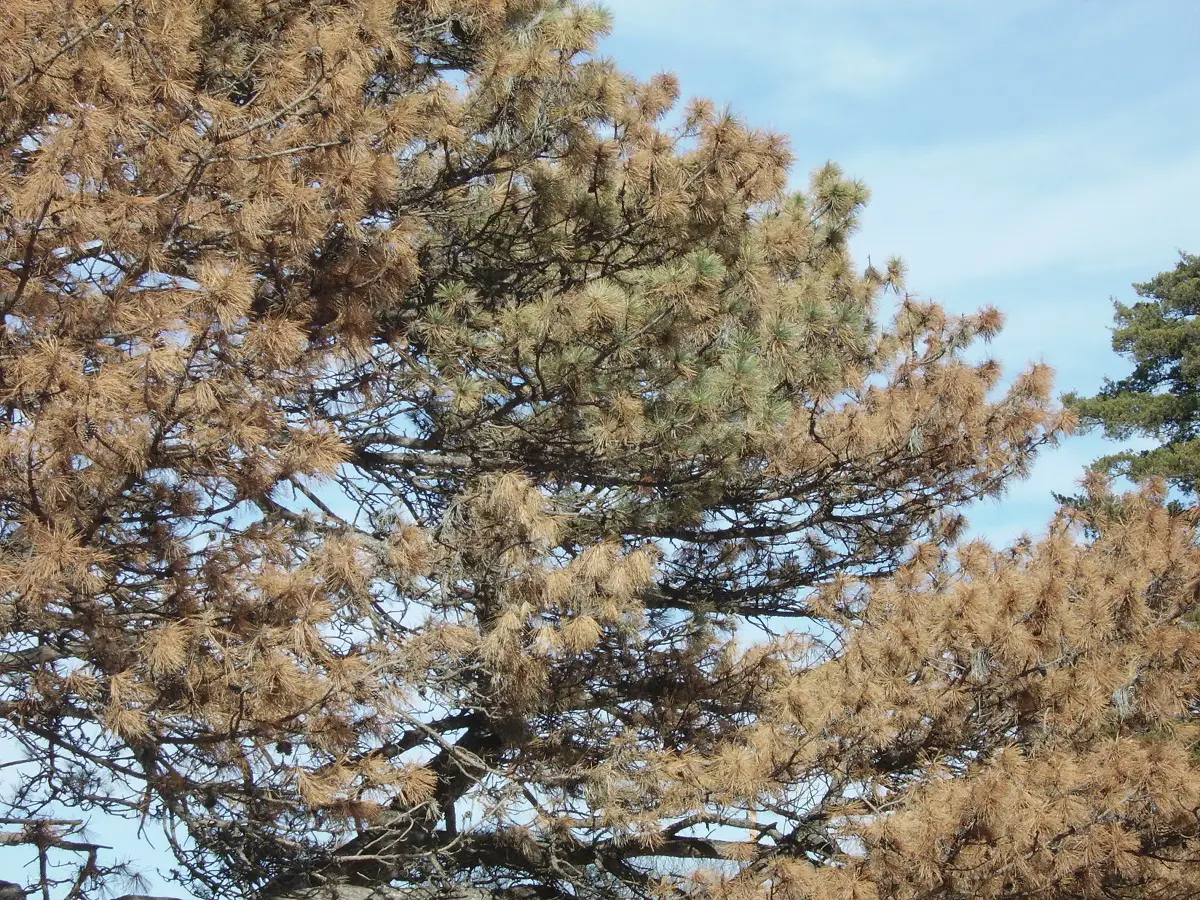

The Bursaphelenchus xylophilus It is one of the organisms that most damages all kinds of exponents of pines and conifersand it is one of the concerns most taken into account by naturalist organizations and city councils throughout Spain.
This has to do with its effect is quite overwhelming, causing the rapid decay of this type of vegetationcausing not only ecological damage, but also economic damage to all regions of the country.
What is the Bursaphelenchus xylophilus


The Bursaphelenchus xylophilus is a tree disease that usually occurs in species of Pines and in other types of coniferous treeshaving a very fast effect and impact on the trees, causing them to decay quickly and very difficult to recover, leaving them completely withered and losing all their properties.
There are many types of trees that usually have this type of disease. Only in Spain, the species most prone to contracting this disease are the Scots pine, black pine and dwarf pine. There are others affected, but at a slightly lower level than those previously mentioned, whose sensitivity is not so great as to be harmful to them to a great extent.
Among the great risks that this disease can bring, is the sudden decline of the trees, and therefore an ecological catastrophe that brings drastic changes to forest ecosystems and where these types of pines lodge.
At the same time, the wood industry can suffer severe inconveniences in areas where this pest is most prolific, something that causes quarantine measures to be taken throughout the European Unionfor the prevention and treatment of the symptoms and consequences of the disease.
From
The distribution of this pest that affects many types of trees around the world has its origin in the countries of North Americawhere in reality it does not generate major damage, because the types of pines and conifers that are found there present a greater degree of resistance than those that grow in Europe.
This organism crossed the oceans by trading wood that was affected, reaching in the first instance some countries on the Asian continent, where it would find and lodge in species that did not have the same robustness characteristics as the American ones and would begin to affect more sensitive trees.
This proliferation throughout that area occurred during the first decades of the XNUMXth century.where its presence is still unknown and it was believed that the symptoms of this plague were caused by another type of insects, from the family of borers.
But that sudden decline of Asian trees, specifically the Chinese, Koreans and Taiwanese was due to this organism, which it is also called the pinewood nematode.
Shortly before the XNUMXst century arrived, the first cases of Bursaphelenchus xylophilus in trees in the European Union, more precisely in Portugal, something that set off the alarm of caution in all the rest of the European countries, due to their proliferation in the center and north of the Portuguese soil.
What are the symptoms?
To understand what the symptoms of this pest are, we must first understand that this disease of pines It is transmitted through an insect which is called Monochamus.
The infestation of different trees that are in a healthy state occurs through two different actions: When this insect feeds on these pines and conifersso when they lay eggs in trees that are already in the process of decomposition.
Symptoms will not be detected at first, and in which these insects carry it and introduce it into the pines. Conversely, It may take a few months until you begin to see deterioration in these.
This deterioration caused by the Bursaphelenchus xylophilus it will manifest itself first in the upper area of the tree, seeing some branches completely you and the deteriorated aspect with yellow or brown tones in areas where green is generally abundant.
This that at first we will see in the upper part, will start to take over the whole pinealso reaching the lower part and thus generating dissection and general deterioration. It is very possible that in a year after the inoculation of the disease the specimen will die.
Monochamus galloprovincialis
Among all types of vector insects Monochamusthe so-called galloprovincialis it is the one with the most common presence within Europe. This vector can be found in all types of forests and its larvae, containers of the Bursaphelenchus xylophilus They have long hibernation processes in the wood of different types of pines.


These larvae, when spring comeswill have developed and will be an insect that contains this diseasemoment where to feed they will fly towards the treetops and that is why this area is the one that is most affected in principle. This has to do with the fact that these insects feed on the fresh grass found in this upper part of the conifers.
Temperature will directly influence the density of growth of this type of insect, being the climates in which the temperatures and the highest humidity, the most propitious for them to reproduce and be carriers of the disease. But their proliferation throughout the world does not come through the increase of insects and their natural propagation, but rather occurs through the commercialization of wood.
Phytosanitary measures in Europe
The arrival of this pine wood nematode he Portuguese territory at the beginning of this millennium, has caused awareness and measures to be considered throughout the first decade of 2000, so that all the peoples that detect this plague, take the due precautions and actions for its total eradication .
So an exhaustive control must be carried out on the pine populations and conifers that appear as the most sensitive species and also control the insect that produces the pest, in all ecosystems where it could occur, even in areas that have not been delimited as mentioned in the first point.
